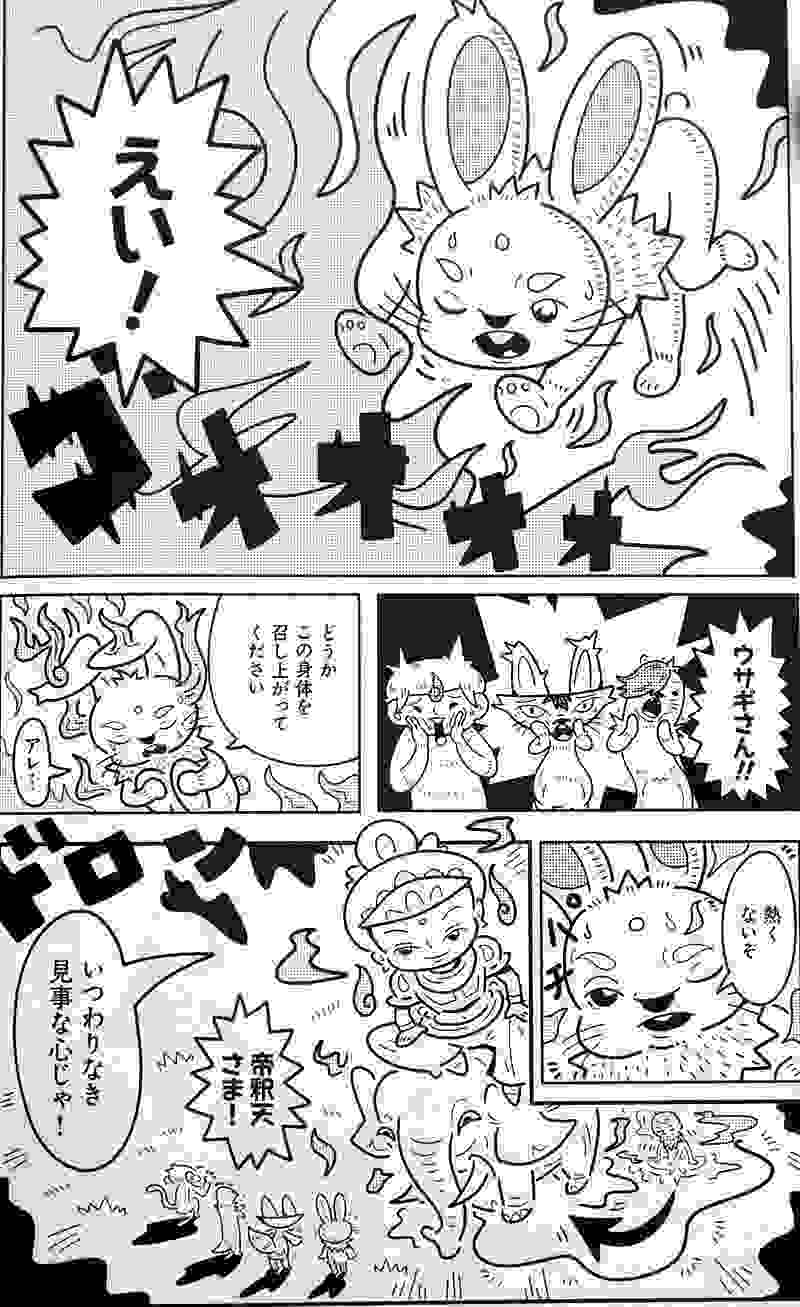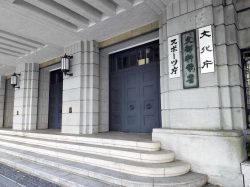
Hiroaki Mitsuzawa speaks in Shimogyo Ward, Kyoto. “Recently, I’ve felt that being a monk mangaka isn’t that bad,” he said.
13:50 JST, January 12, 2023
KYOTO — Life is trying for many commuters in Japan. Some are worried about their workplace relationships, while others feel crushed after having failed at their job. A manga-drawing Buddhist monk wondered if Buddhist teachings might not offer a way for such people to begin moving forward again. Inspired by this thought, Hiroaki Mitsuzawa last summer published a business book that combines manga and text.
In his day job, Mitsuzawa is a monk in the Otani branch of the Jodo-Shinshu sect of Buddhism. (The Otani head temple is Higashi Honganji in Kyoto.) He has also previously published books on Buddhism. His motivation for the current venture grew out of his past failings as a mangaka.
Mitsuzawa was born in 1989 in Niigata Prefecture and became a Buddhist monk when he was 11. In 2011, he graduated from Kyoto Seika University, majoring in manga. He then studied at the now defunct Otani University Junior College, and began working for the Otani branch in 2013. In 2021, he published his first book, “Ikiru no ga Tsurai Toki ni Yomu Buddha no Kotoba,” with SB Creative Corp. The title roughly translates to “Words from the Buddha you should read when living is hard.”
Mitsuzawa dedicated his young life to manga. He has loved drawing ever since he was a child. Although he was the first son of a priest presiding over an Otani temple in Niigata Prefecture, he dreamed of becoming a mangaka when he was in elementary school. He used to read the Shukan Shonen Jump weekly boy’s manga magazine, and doodled in his notebooks. When he was in junior high and high school, he joined the school tennis club because he did not want classmates to view him as a geek. But he would secretly draw in sketchbooks at home.
At Kyoto Seika University’s Faculty of Manga, the motto is: “The more you draw, the better you become. It’s more important to move your hand than to learn theory.” During his four years at the university, Mitsuzawa would go to Kyoto City Zoo every day to sketch.
“But I didn’t find it tough because I could work on drawing, which I loved,” he said.
The students who came from across the country to attend the university all boasted strong artistic skills.
“One of my classmates was extremely good and could sketch people and animals on the move quickly and accurately,” Mitsuzawa recalled. “I was more or less of the ‘hetauma’ [crude but affecting] type. I wasn’t good at making sketches, but I was good at drawing funny, charming pictures.”
He wanted to become a mangaka after graduation instead of succeeding his father in his position at the family temple. Yet experienced manga editors were harsh on him, criticizing the works he brought to them as “derivative” and “poorly drawn.” He was even told that he had better look for another job.
“I’d worked so hard, so it was really frustrating,” he said.
As he struggled day after day with his feelings of disappointment, he remembered the words of his mentor at the university.
“People born to a temple are very rare in the manga industry. Why don’t you find a subject from temples and Buddhism?”
Mitsuzawa then managed to put his disappointment behind him and obtain a teaching qualification from the Otani branch in order to learn about Buddhism more deeply. He also drew manga for free magazines published by young monks.

The cover of Mitsuzawa’s second book, “Shigoto ga Tsurai Toki ni Yomu Bukkyo no Kotoba”
For tough working environments
His new book, published by Seikaisha, is his second publication and is titled “Shigoto ga Tsurai Toki ni Yomu Bukkyo no Kotoba,” which roughly translates to “Buddhist words you should read when work is tough.” It was his manga for a free magazine, as well as his work on other media, that caught the eyes of an editor. Mitsuzawa used weekends and weekday evenings to write and draw, and completed the book in about a year.
The book has five chapters, such as “environmental changes” and “personal relationships.” Accounts of Mitsuzawa’s own experiences, such as his failures as a mangaka and what he has felt at work, are woven into the book. For example, he was much dismayed when someone older than him with a lot of experience changed jobs and became his subordinate. Another time, he made several mistakes and was scolded by his boss.
Each such episode is accompanied by a four-page manga that includes a moral for the reader to take away. He also introduces various Buddhist teachings, such as how to think about personal relationships and how to be unselfish and considerate of other people.
“Buddhism is not only about rituals and rites. Sutras may sound like some incantation, but once you know their meanings, they let you realize an alternative sense of value, alternative viewpoints. Manga has an ability to appeal to your senses, and I complemented that with text,” he said.
At his current workplace, the Otani Mausoleum at Higashi Honganji temple, he is busy receiving visitors every day. He also became a husband and a father after meeting a woman born to an Otani temple in Fukuoka Prefecture.
“As a mangaka, I might have made a detour. But I will draw what only I can draw, taking advantage of my learning as a monk. Of course, I will continue to avidly hone my skills as an artist,” he said.
His desire to create is irrepressible.

A page from Mitsuzawa’s second and latest book
"Culture" POPULAR ARTICLE
-

Van Cleef & Arpels Dazzles with Art Deco Artisanry at Tokyo Exhibit
-

Disney’s ‘Twisted-Wonderland’ Animated Series Puts Villains in Spotlight: New Show Features School Inspired by Classic Disney Films
-

Japan Plans to Distribute Manga Overseas Via New Platform
-

Japanese Craftsman Produces Beautiful and Durable Bags Made of Wood
-

Ayumi Hamasaki’s Shanghai Concert Canceled Day Before Schedule as Part of Beijing Backlash
JN ACCESS RANKING
-

Keidanren Chairman Yoshinobu Tsutsui Visits Kashiwazaki-Kariwa Nuclear Power Plant; Inspects New Emergency Safety System
-

Imports of Rare Earths from China Facing Delays, May Be Caused by Deterioration of Japan-China Relations
-

University of Tokyo Professor Discusses Japanese Economic Security in Interview Ahead of Forum
-

Japan Pulls out of Vietnam Nuclear Project, Complicating Hanoi’s Power Plans
-

Govt Aims to Expand NISA Program Lineup, Abolish Age Restriction




◎上海の日本アニメイベント_20251129YGTGS000921_C-250x168.jpg)




















